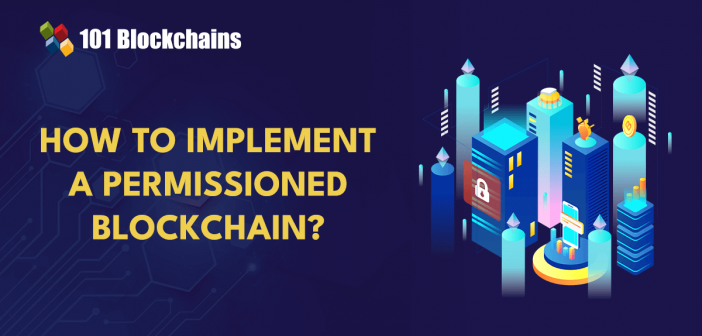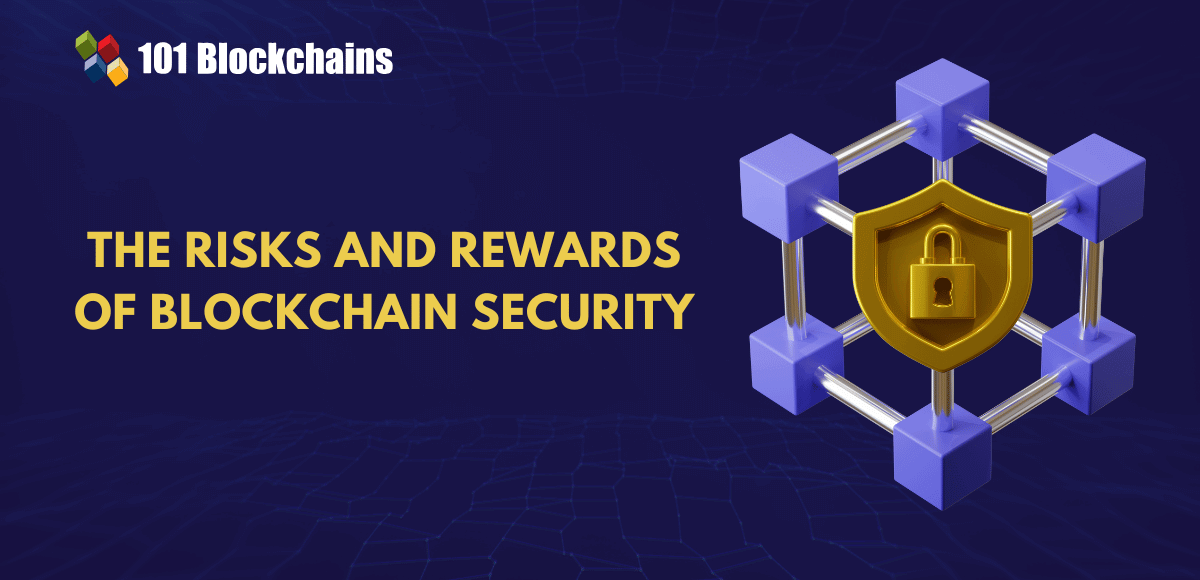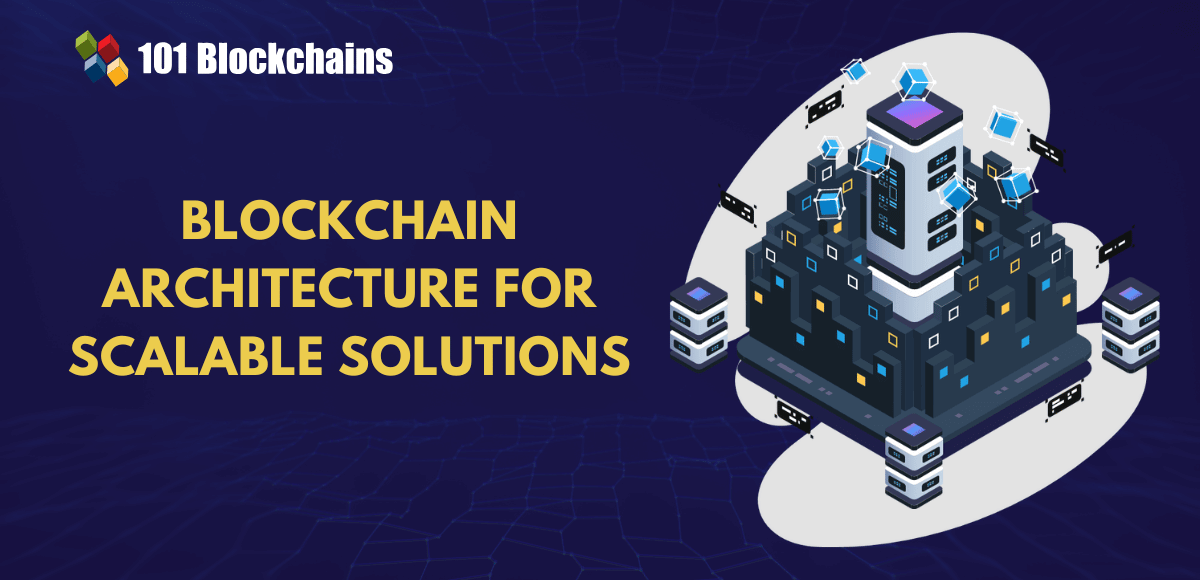Learn how blockchain truly works, master key definitions, and uncover what makes smart contracts so "smart." Dive into the fundamentals, gain valuable insights, and start your blockchain journey today!

- Blockchain
James Howell
- on September 20, 2024
Best Practices for Implementing a Permissioned Blockchain
Blockchain technology has emerged as a transformative force in the world of financial services with the introduction of cryptocurrencies. Over the years, blockchain has developed the foundations for multiple decentralized systems and applications, including NFTs and DeFi solutions. One of the most important trends in the domain of blockchain points to the differentiation between permissioned and permissionless blockchains. If you are here looking for best practices for implementing permissioned blockchains, then you must know why permissioned blockchains have gained popularity. Blockchain is inherently decentralized and completely transparent, thereby allowing anyone to check the data on the networks. However, data visibility increases the risks of security threats that can damage the integrity of blockchain systems.
Permissioned blockchain helps make blockchain technology more appealing to businesses with the assurance of better control over data visibility. Some of the common permissioned blockchain networks include Hyperledger and Corda, which help in creating blockchain systems for businesses.
The necessity of permissioned blockchain implementation is visible in the case of businesses that emphasize data privacy and control more. However, it is also important to note that the implementation of permissioned blockchains invites multiple challenges. Let us take a look at the best practices for implementing permissioned blockchain and the ideal solutions for resolving them.
Build your identity as a certified blockchain expert with 101 Blockchains’ Blockchain Certifications designed to provide enhanced career prospects.
How are Permissioned Blockchains Better than Permissionless Blockchains?
Before you find the answers to ‘How do you implement a permissioned blockchain?’ you must be aware of the significance of permissioned blockchains. As envisioned by Satoshi Nakamoto, blockchain networks should allow everyone to participate without any censorship and guarantee complete transparency of data on the networks.
However, problems with lack of authorization and transparency into data can create problems for businesses that want to keep certain data confidential. Permissioned blockchains are different from permissionless blockchains in terms of decentralization, decision-making, transparency, speed, and anonymity.
In permissioned networks, owners or administrators are the ones who make the calls and allow access privileges. However, the owners and administrators also gain control over the degree of decentralization they want to provide with the blockchain network. Another difference with permissioned or private blockchain implementation is the control of owners over the level of transparency. Permissioned blockchains can offer restricted exposure to certain parties and maintain complete privacy against external parties.
Permissioned networks also compromise identity, as users have to provide identification and personal data to gain access. However, the limitations on decentralization and fewer nodes in permissioned blockchains improve the speed of transactions. With limited nodes required to reach an agreement on legitimacy of transactions, permissioned blockchains provide faster transaction processing.
Why Should You Know the Best Practices for Implementing Permissioned Blockchains?
Public blockchains depend on a self-sovereign style of management that relies on complete decentralization. The rules for governance of public or permissionless blockchains are defined by consensus algorithms. On the other hand, a permissioned blockchain implementation has a completely different structure. Permissioned blockchains follow the private or consortium model of deployment, and the participating nodes have to be responsible for maintenance of their nodes. At the same time, they must also work with resiliency and efficiency in an interoperable blockchain network.
Permissioned blockchains need flexible and secure governance models alongside mechanisms for on-chain collaboration to resolve operational issues. Some of the common operational issues across different layers of permissioned blockchain networks include storage management, chaincode distribution, interoperable connections, and membership governance. Businesses setting up their private blockchain networks have to pay specific attention to certain issues and resolve them to achieve efficiency.
How Can You Implement a Permissioned Blockchain without Challenges?
The ideal approach for answering questions like “How do you implement a permissioned blockchain?” would involve a review of the common challenges in the process. It is important to review the most prominent issues for implementing permissioned blockchains and determine the best practices for implementation of permissioned blockchains. Here is an outline of the best practices for businesses to implement permissioned blockchain networks.
-
Data Backup and Recovery
One of the foremost questions in the implementation of permissioned blockchain networks is data backup and recovery. Businesses could opt to create a new node for data backup and recovery on blockchain networks. However, permissioned blockchain implementation best practices would suggest that it is impractical to wait for hours as the node syncs up data from all the nodes and transfers configuration metadata.
In addition, data recovery becomes more important in situations when you have to migrate data across different data centers. Therefore, it is important to look for tools that can support data migration or blockchain node upgrades without any service disruptions.
-
Byzantine Fault Tolerance Consensus
Byzantine Fault Tolerance or BFT consensus mechanism is an advanced algorithm for distributed networks. It is useful in situations where certain nodes fail to respond or provide incorrect information. The best practices to permissioned blockchain deployment focus on BFT consensus as it is a complex consensus algorithm.
Therefore, it is important to choose consensus algorithms based on academic proof for effectiveness and safety. Some common examples of such algorithms include Algorand and Tendermint. In addition, blockchain architects and developers could also explore many other innovative advancements for implementing permissioned blockchains with BFT consensus.
Business-level implementations of blockchains must ensure that the consensus mechanism works according to the comprehensive proof requirements. In addition, the consensus mechanisms must deliver the desired operational traits such as resilience and performance.
Start learning Blockchain with World’s first Blockchain Skill Paths with quality resources tailored by industry experts Now!
-
Pluggable Implementation
Another crucial addition among private blockchain implementation best practices points at pluggable implementation. It is important to account for the regulatory compliance requirements across different countries. Different jurisdictions, such as Asia, the EU, and Russia, require blockchain networks to follow certain crypto standards.
Therefore, implementation of permissioned blockchains requires painstaking effort to ensure that specific libraries and aspects of the blockchain match with regional and national blockchain standards. With the help of pluggable implementations, developers and architects can save a lot on programming. It would also help in the promotion of open-source technologies for permissioned blockchain compliance in a larger market.
-
Governance Model
Permissioned blockchains are the first choice of businesses, and every business follows its own governance model. Therefore, the best practices for permissioned blockchain implementation must emphasize the selection of a complex governance model. Governance is a critical factor in consortium blockchain implementation models used for permissioned blockchains.
Lack of governance could lead to significant challenges with real applications such as policy definition, smart contract deployment and upgrades, agreements on addition of new members, or creation of new challenges. In the case of consortium blockchains with multiple members, it is impractical to achieve consensus at scale across different organizations. It is important to look for practical solutions for addressing such issues by utilizing on-chain mechanisms that can offer audit trails for governance-related agreements.
Another important highlight among permissioned blockchain implementation best practices is the use of automation through chaincodes. The automation by chaincodes could help in reaching agreements by utilizing voting and other instruments. It can be supported through a special governance channel for existing transactions, policy evaluation results, and votes, and the channel must be similar to the one used for governance of ordering services.
In addition, permissioned blockchains can also improve their governance by using a Governance System Chaincode or GSCC. Businesses can also opt for external decentralized governance systems offered by vendors. Stronger and more flexible governance mechanisms can help in extending the functionalities of governance to other users. For example, users can vote for addition of new members, evaluate proposals against policy requirements, and track proposals.
Familiarize yourself with the complete Ethereum smart contract development lifecycle and gain fluency in the best practices for smart contract coding, testing, and deployment with Smart Contracts Development Course.
-
SQL and Smart Contract Problem
The use of SQL for data queries in smart contracts leads to a significant challenge for permissioned blockchain implementation on networks such as Hyperledger. It is evident in the queries for key or value data, which applies conditions to the values. However, industry experts believe that SQL language can support rich queries in smart contracts for permissioned blockchain implementations.
It is a useful recommendation for businesses who want to migrate existing business logic in SQL to blockchain smart contracts. The use of extensive SQL SELECT features reduces the complexity of the code and uses a single query for aggregating results. As a result, permissioned blockchains would not need multiple queries through multiple network hops.
One of the examples of leveraging the SQL and smart contract combination is the Oracle Blockchain Platform. It offers SQL-Lite, which helps users enjoy the power of SQL alongside achieving more transaction processing speed. In addition, it is also important to note how it supports interoperability. Oracle Blockchain Platform offers support for CouchDB query language in the chaincodes over Berkeley DB world state database.
-
Pruning and Archiving
The challenges for implementation of permissioned blockchain also focus on pruning and archiving. Businesses seeking answers to “How do you implement a permissioned blockchain?” must deal with the challenges of larger transaction volumes.
For example, a maritime shipping network that tracks millions of shipments every year on a permissioned blockchain would exceed three billion transactions in a year. According to the payload size alongside the growing number of digital signatures with the transaction, the storage requirements would increase to unmanageable levels.
Pruning solutions have become an important technique for managing permissioned blockchain storage through archiving old content. In addition, decentralized storage systems can also offer an exclusive answer to the storage requirements of permissioned blockchains.
-
Blockchain Network Performance
The discussion about transaction volumes draws attention to blockchain network performance issues in permissioned blockchains. Most of the private blockchain implementation use cases revolve around the objective of achieving better performance. However, issues in interpretation of performance metrics could present a formidable challenge for deployment.
Some of the performance metrics in blockchain networks include latency and throughput. The metrics would vary significantly in different network sizes and hardware configurations alongside tradeoffs made between latency and throughput. However, the evaluation of permissioned blockchain use cases in different industries shows that each industry has its distinct requirements.
The ideal suggestion in such cases is to look for practices that can support optimization of performance from a systematic view. For instance, chaincode could process many calculations, and the ledger would require storage that could subsequently affect the network latency required for consensus.
Permissioned blockchains need effective performance optimization solutions according to the business requirements and platform architecture. In addition, effective tracking of all factors that influence the payload size, network capacity, and throughput can help address customer requirements effectively.
-
Data Privacy and Confidentiality
The list of challenges in the practices to permissioned blockchain implementations also includes data privacy. It is a major bottleneck in the domain of blockchain. Businesses that want to share confidential business data should be concerned regarding the confidentiality among certain participants.
It can also help shield data from other participants’ access. As the scope of blockchain adoption continues to grow, it is important to understand that there are multiple approaches to ensuring data privacy. However, there is no specific solution that you can call the perfect tool for ensuring data confidentiality.
One of the solutions in permissioned blockchain implementation best practices is the use of blockchain nodes as managed cloud services. Users could only access the nodes through event subscriptions and APIs, thereby ensuring easier management of data privacy.
It is easier to set the channel access policies to prevent unauthorized members from viewing the detailed block content. As a result, the authorized members could only upgrade or deploy chaincode. On top of it, access control lists or ACLs in smart contracts can also offer an effective solution for data privacy in permissioned blockchains.
Start learning Blockchain with World’s first Blockchain Career Paths with quality resources tailored by industry experts Now!
Final Words
The best practices for implementing permissioned or private blockchains showcase that you can achieve the best results by fighting the challenges. It is important to achieve the desired results of private blockchain implementation by reviewing challenges in data backup and recovery, regulatory compliance, and data privacy. As businesses explore new use cases of blockchain technology, the elements of interoperability and performance will also gain the limelight. Learn more about permissioned blockchains and how they work to understand the best ways to create and deploy them.
*Disclaimer: The article should not be taken as, and is not intended to provide any investment advice. Claims made in this article do not constitute investment advice and should not be taken as such. 101 Blockchains shall not be responsible for any loss sustained by any person who relies on this article. Do your own research!






